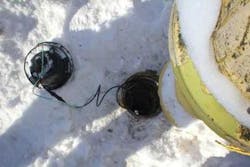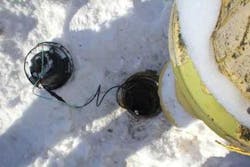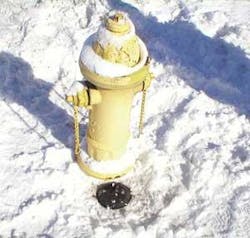Remote, Correlated System Offers Accurate Leak Detection
by Laura Wainwright
Plugging small water-main leaks is one of the major ways to reduce non-revenue water loss and positively impact water resource management efforts. A new correlated, acoustic leak detection system has been developed to help identify small leaks before they become major problems.
The Star®-ZoneScan system combines the fixed Star Network system from Aclara RF Systems Inc. (formerly Hexagram), with the Zonescan 800® leak-detection technology from Gutermann International, Zurich, Switzerland. The new system is currently in pilot at a site selected by American Water, the largest investor-owned water and wastewater utility company in the U.S. The pilot is proving the benefits of the acoustic listening system perfected by Gutermann.
American Water placed 200 detectors on valves or hydrants within its pilot area. These devices check and analyze noise characteristics on the water lines at regularly scheduled intervals. The sound samples collected by individual units are sent back to the utility via an adapted Aclara meter transmitter located in a lid that sits on the bell of the pipe leading to the valve. A wire extending from the transmitter links it to the listening device. The transmitter records the sound created by water flow at the valve and sends this data to the utility, where the Gutermann software correlates the data to pinpoint possible leaks.
The use of acoustic sound sampling is what differentiates the Gutermann devices from other leak-detection systems that employ simple logging devices. Other solutions assign leak values to specific points in the water distribution system to indicate the likelihood of a leak. (Gutermann devices can also perform this task.) But the leak values themselves cannot be correlated. To actually find the leak a crew must be sent to the field to do correlation testing.
This is the first time that this type of leak detection, which involves large amounts of data related to sound sampling, has been done remotely. The Star Network system, which employs a 450- to 475-Hz radio-frequency signal to transmit information, is powerful enough to offer remote data collection. In addition, the system’s distributed data collection scheme can handle the large volumes of data related to the acoustic profiles, ensuring that information is collected accurately and reliably.
The Star-ZS system is designed to be either permanently or temporarily deployed, depending on the requirements of the utility. For example, a utility could place a number of intelligent detection devices in one area, keep them there a few days or weeks, and then move them to another area.
About the Author: Laura Wainwright is the product marketing manager for water and gas at Aclara RF Systems Inc., a subsidiary of ESCO Technologies Inc. Her background includes experience in coordinating automatic meter reading projects for a major water utility.


